Four years ago, Citigroup CEO Jane Fraser shattered Wall Street’s glass ceiling to become the first woman to lead one of the Big Four U.S. banks. But long before taking the helm of the $2.6 trillion financial institution, Fraser was honing a skill set that would quietly define her ascent—one forged not just in the corridors of high finance, but also inside the high-pressure, hyper-analytical halls of the world’s most famous consulting firm.
Fraser joined McKinsey in 1994, fresh from Harvard Business School, and the superpower she learned there was “problem structuring.” As a young consultant, cycling through boardrooms and back offices, Fraser was trained to break down sprawling challenges, design transformation road maps, and rally teams across silos. By the time she made partner in 1997—at the age of 30—she had advised multinational corporations on everything from growth strategy to crisis recovery.
It was a crash course in decision-making and pattern recognition across a range of industries. “You learn to structure issues from the ground up, to define what success looks like, and to pull the right people together to get there,” Fraser says. “That way of thinking has never left me.”
Fraser left McKinsey in 2004 to join Citigroup. The skills she developed in consulting didn’t apply immediately. But over time, they became central to her executive playbook: a methodical, systems-driven approach to fixing what’s broken, reimagining what can be achieved, and scaling what works. Fraser rotated through critical roles, often in battered businesses, from private banking to Citigroup’s mortgage unit after the housing crash. When she was tapped to lead Citigroup Latin America in 2015, she inherited a franchise still dealing with fallout from a major fraud scandal and in need of a cultural and risk-management overhaul. Each assignment sharpened her instincts as a fixer and strategist.
By the time she ascended to CEO, Fraser brought more than financial fluency, she says. She brought a horizontal approach to leadership, a comfort with ambiguity, and a knack for breaking the messiest problems into solvable parts—the muscle memory of McKinsey.
Fraser is hardly an outlier. Across corporate America, McKinsey-trained executives occupy a remarkable number of corner offices. The firm counts at least 18 current Fortune 500 CEOs among its alumni—more than any other company—including Alphabet’s Sundar Pichai, DoorDash’s Tony Xu, Lockheed Martin’s James Taiclet, and Visa’s Ryan McInerney. Add the Fortune Global 500, and that list jumps to 28, with names like Novartis’s Vas Narasimhan and Allianz’s Oliver Bäte. McKinsey says its internal data shows that more than 500 alumni have held C-suite roles at current Global 500 companies since McKinsey’s founding; more than 700 currently hold such roles at companies with more than $300 million in annual revenue, and, stunningly, more than half of its alumni over age 40 have reached the C-Suite.
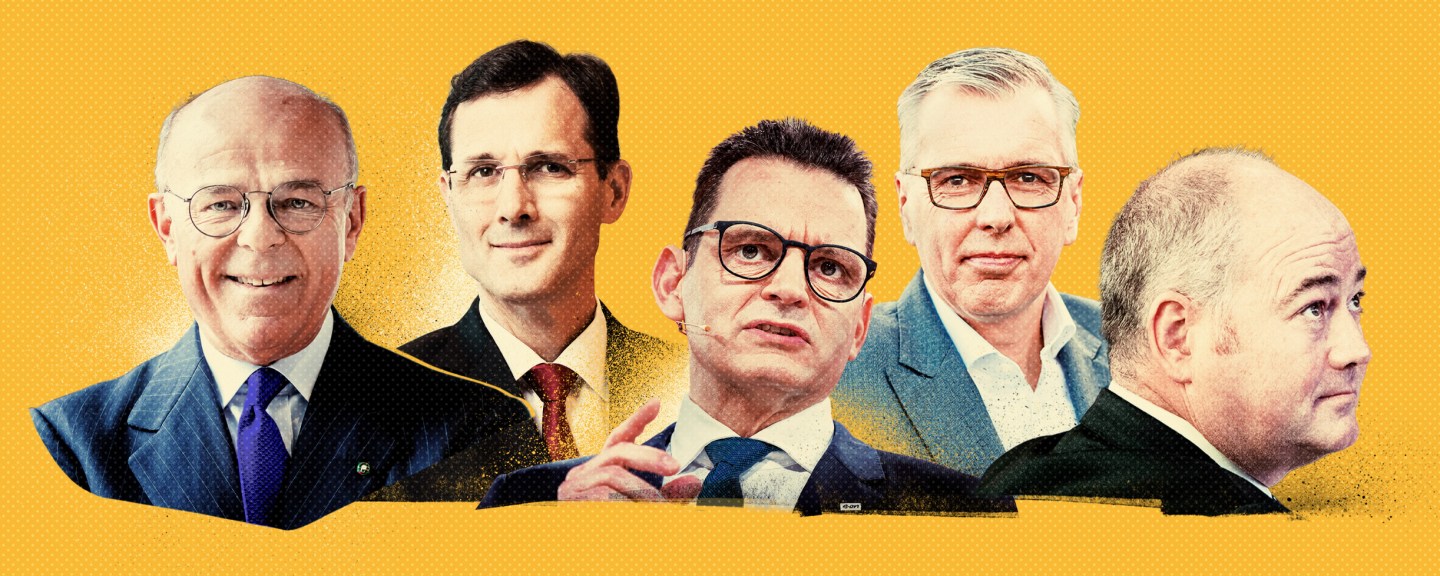
Photo Illustration by Josue Evilla—Fortune; from photos by BETTY LAURA ZAPATA/BLOOMBERG; EDWIN KOO/BLOOMBERG; CHRISTOPHER KATSAROV LUNA/BLOOMBERG; ROLF VENNENBERND/PICTURE ALLIANCE; BRENT LEWIN/BLOOMBERG Getty Images
Those numbers may not be a result of deliberate strategy, but they didn’t accrue by accident. For decades, McKinsey has positioned itself as a finishing school for future leaders, where raw talent is shaped through intensity, repetition, and exposure to high-stakes decision-making. The result, when it works, is accelerated judgment and a boldness in imagining ambitious solutions. “You start to believe that more is possible,” says Liz Hilton Segel, a senior partner and McKinsey lifer. “You build pattern recognition that comes from helping a client do something they didn’t think was even achievable—and that builds confidence you carry forever.”
The work is demanding, but the payoff has historically been clear: a fast track to influence. And unlike firms that lose track of talent after the exit interview, McKinsey keeps its alumni close. Through invite-only summits, mentorship programs, and informal back channels, it has built one of the most powerful self-reinforcing networks in global business, maintaining relationships long after consultants leave the company, and often reengaging them as clients or collaborators on the other side of the table.
But there’s no guarantee that this pipeline can replenish itself forever. As with General Electric—a once-prolific CEO factory whose dominance has since waned—the question now is whether McKinsey’s golden age as a corporate kingmaker can endure, especially as artificial intelligence reshapes the very foundation of consulting.
The firm that once trained future executives by immersing them in the world’s toughest business problems now faces a future where algorithms are taking on part of the work. Benchmarking, research synthesis, and even PowerPoint creation, once the province of junior consultants, are increasingly automated. That shift is forcing McKinsey (and other consultancies) to rethink their talent models and their value proposition. No longer reliant on a steady stream of fresh MBAs, McKinsey is hiring more seasoned operators—established leaders who know how to plan for technology-driven change and see it through.
At the same time, the Fortune 500’s leadership archetype is evolving. Boards are prioritizing executives with deep technical fluency and a proficiency for developing great products, and who have led organizations through the messy realities of digital transformation. Historically, McKinsey’s alumni have been most concentrated in sectors where its problem-structuring muscle mattered most: finance, health care, and industrials. Across the Fortune 500 and Global 500, roughly a third of alumni CEOs sit in banking, insurance, and payments, with another sizable share in health care and life sciences.
Where McKinsey’s footprint thins is just as telling. In Big Tech, the marquee names are few: Pichai and Xu. Absent are alumni in the top job at Apple, Amazon, Meta, or Microsoft, a cohort that’s steadily defining the future of the global economy. That’s not coincidental: These firms often elevate leaders who came up through engineering or product ranks and whose credibility comes from building and scaling platforms rather than analyzing them. The strategist-CEO, long synonymous with McKinsey, now competes with a rising class of tech-native leaders, many of whom have never set foot in a consulting firm.
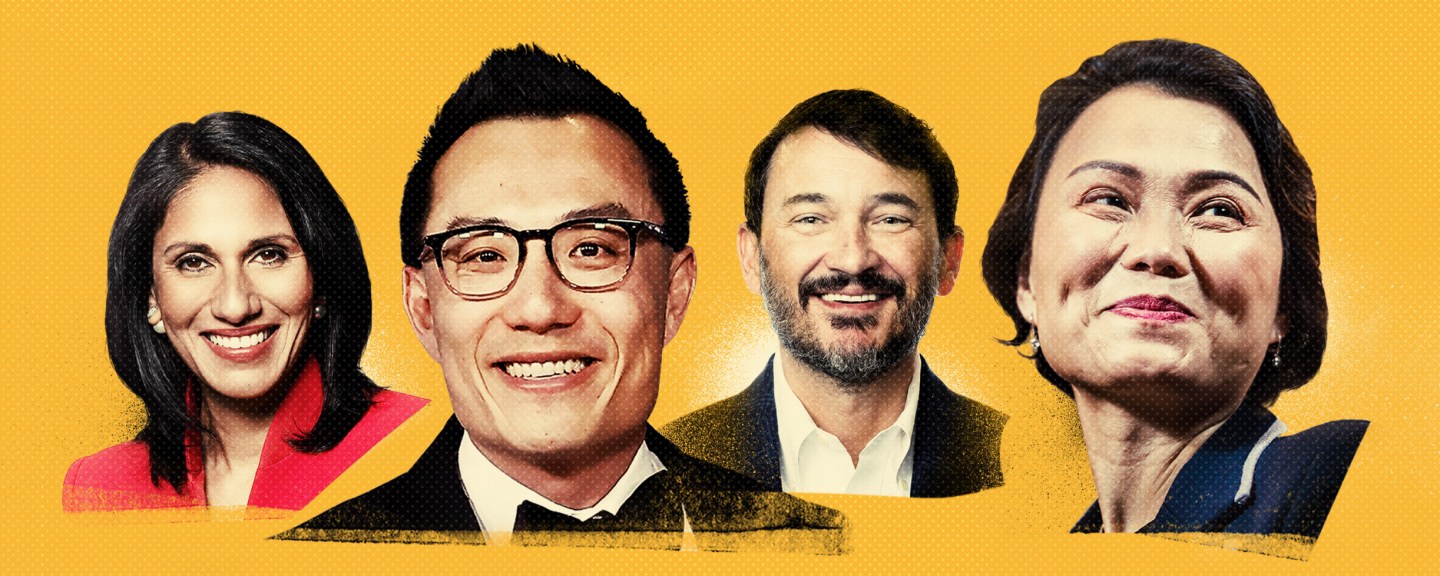
Photo Illustration by Josue Evilla—Fortune; from photos by TAYLOR HILL—FILMMAGIC/GETTY IMAGES;; LAM YIK—BLOOMBEG/Getty Images; and Courtesy of the companies
Still, writing off McKinsey would be premature. The firm, which turns 100 next year, has weathered tectonic shifts before, from the rise of globalization to the digital revolution. McKinsey doesn’t just advise companies, the firm says. It teaches people to think in systems, dissect complexity, and lead decisively.
The real test is whether that model can evolve fast enough to stay relevant in an AI-powered economy. In the past 18 months, McKinsey has trimmed 10% of its global workforce, largely through attrition and tougher performance-management thresholds. The move is being described as a strategic reset, but the scale is large enough to suggest more than mere belt-tightening.
The firm that helped define corporate leadership must now prove it can produce a new kind of CEO—not just strategists, but architects of transformation. If it can, its grip on the C-suite may endure. If not, McKinsey’s legacy as a CEO factory may give way to a new center of gravity that’s built in code, not in conference rooms.
The leadership engine
Inside McKinsey’s lower Manhattan offices, one meeting room stands apart. It’s a replica of former managing partner Ron Daniel’s corner office—a tribute to the man who helped turn McKinsey into a leadership factory. Daniel, who spent 66 years at the firm and was an advisor to the likes of Jamie Dimon and Michael Bloomberg, continued coming into the office well into his nineties before passing away in 2023. It was under his tenure as global managing partner from 1976 to 1988 that McKinsey leaned into its identity as a breeding ground for top executives.
Now the firm is reasserting that legacy with new urgency. “We are creating lots of leaders,” says Bob Sternfels, McKinsey’s global managing partner, the firm’s CEO equivalent. “But is it random, or is there something in the formula and the method?”
That question is now central to McKinsey’s effort to rethink its leadership development model. Sternfels believes the answer lies in a “diverse meritocracy”—a system that lowers the drawbridge to a broader talent pool while raising the bar for performance once inside. “It’s far less about credentials and far more about potential and raw intrinsics,” he says. “If you’re good enough, you should feel like you have a shot.”
And that shot comes quickly. New consultants are thrust into stretch roles, steeped in feedback, and expected to develop at speed. Under McKinsey’s infamous “up or out” model, consultants must make partner—on average, within six years—or leave the firm. Most leave within a few years, often for prominent roles in business, public service, and entrepreneurship.
McKinsey alumni are unusually likely to become CEOs—even those who leave relatively early.
65,000
Current number of McKinsey alumni
13%
Percentage who left as entry-level analysts and later became CEOs
52%
Percentage who left as senior partners and later became CEOsSource: McKinsey
The firm’s 3,000 partners face equally high expectations. Each year, a review committee assesses how partners lead, perform with clients, and contribute to teams, conducting 20 to 30 interviews per partner, says senior partner Daniel Pacthod, a member of the panel. Yet that rigor is paired with reflection. Pacthod often encourages colleagues to consider outside opportunities—not to push them out, he says, but to sharpen their sense of purpose. Sternfels shares this view, noting that he wants employees to continuously “reenroll” in their McKinsey career. “In some ways, I don’t care how long you stay,” he says. “What matters is whether you have unrivaled development while you’re here.”
As client demands evolve and leadership grows more complex, McKinsey is betting that the best way to remain indispensable is to double down on its people. Still, the growth is self-authored. Partners have no direct bosses. They’re expected to chart their own course, build their own portfolios, define their value, and maintain lasting relationships with clients.
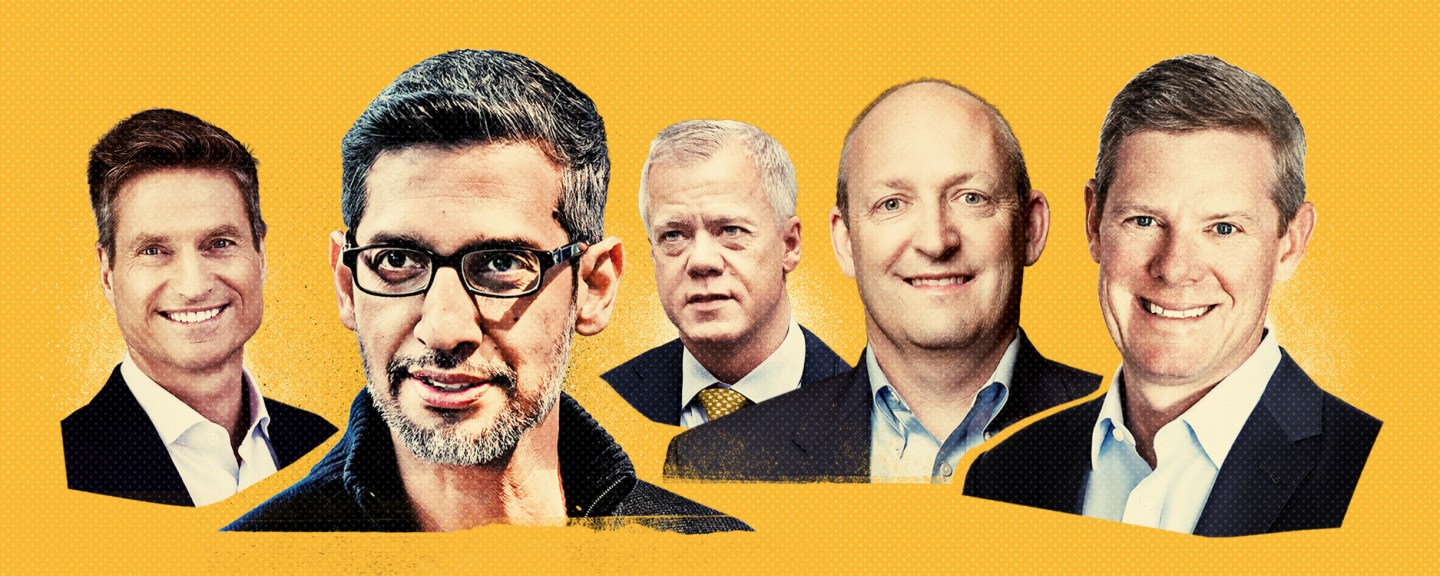
Photo Illustration by Josue Evilla—Fortune; photographs from photos by DAVID PAUL MORRIS–BLOOMBERG; BLOOMBERG/Getty Images; and Courtesy of the companies
That course very often leads to a corner office. McKinsey tracks the arc of its alumni, and an astounding number of them go on to lead companies. Among those now over 50, about 13% of those who left as entry-level analysts have been CEO of a company at some point in their careers—a figure that represents nearly 1,200 people. Among the much smaller group who attained a senior partner badge, more than half became CEOs.
Leaving to lead
For all the resources McKinsey pours into leadership development, many of its most prominent alumni are quick to clarify that the firm was a powerful springboard to the CEO role—but not the whole story. The corner office came only after years spent building operating muscle elsewhere.
“McKinsey has been everything for me,” says Visa CEO Ryan McInerney, who joined the firm straight out of college. From the start, he says, the firm offered him rare proximity to power and a front-row seat to how decisions get made. In the late ’90s and early 2000s, his anchor clients were Bank One and Visa. At Bank One, then a troubled institution, McInerney got to work directly with its new CEO, Jamie Dimon, a formative experience for a young consultant.
But when it came time to lead, McInerney knew he had to leave. “Getting real operating experience was essential,” he says. At 29, he became chief marketing and chief product officer at JPMorgan’s consumer banking division, in an unusually big vote of confidence from his former clients. Later, as chief risk officer, he learned to navigate complexity that extended far beyond a McKinsey slide deck. “The combination of the McKinsey experience and the operating experience at JPMorgan was an exceptional recipe,” he says. Only after he’d run on both tracks did Visa come calling.
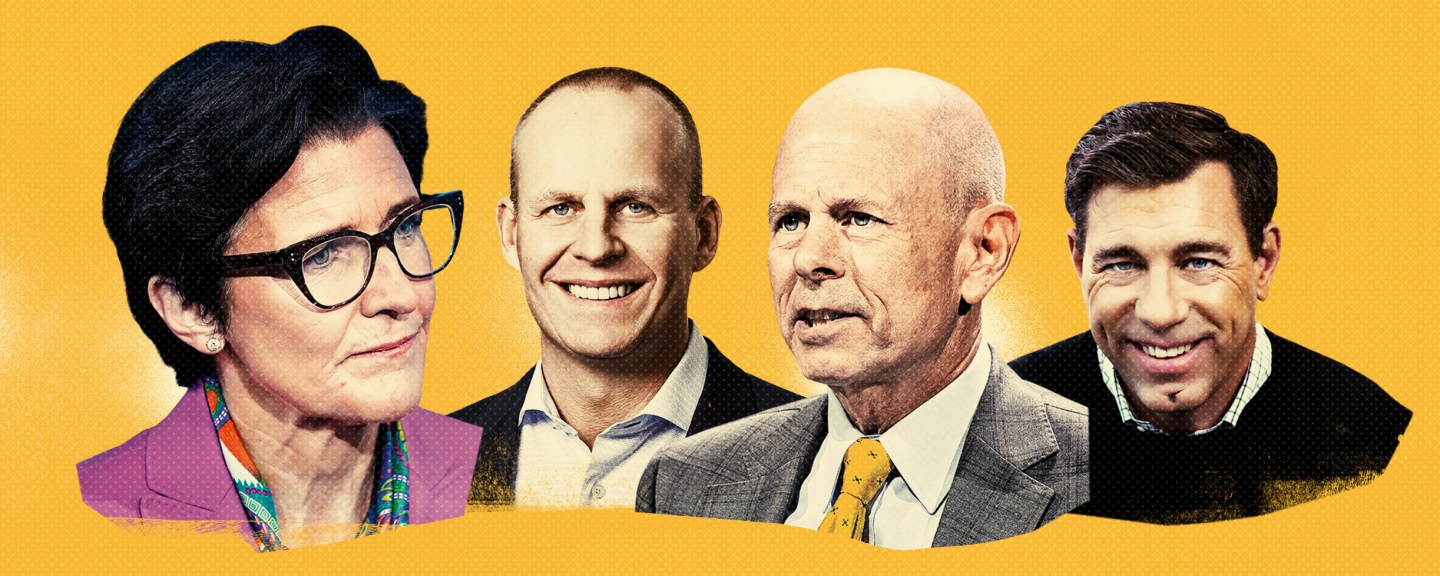
Photo Illustration by Josue Evilla—Fortune; from photos by JOHN LAMPARSKI—GETTY IMAGES; LEV RADIN/PACIFIC PRESS—LIGHTROCKET/Getty Images; and Courtesy of the companies
Citi’s Fraser made a similar leap. She spent a decade at McKinsey, including five years as a partner. “I wanted to actually do, rather than just be accountable for advising,” she says. “I wanted the experience of executing—and then living with it.” At Citigroup, she methodically pursued roles that tested her on-the-ground leadership. Her mentor, then-CEO Mike Corbat, insisted she spend at least five years in a true operating role, so she could feel the full weight of the results on her watch.
As much as she valued her McKinsey training, Fraser is blunt: She wouldn’t have been ready without those years running real businesses. “Absolutely not,” she says when asked if she could have jumped directly to Citi’s top job. “McKinsey gave me the courage to be bold. But it was the time spent building businesses, leading diverse teams, and managing complex P&Ls that prepared me.”
Bäte, the CEO of Allianz, spent 14 years at McKinsey before joining the insurer, where he’s now clocked nearly two decades. His consulting years gave him access to decision-makers at the highest levels, often far earlier than would have been possible elsewhere. In the firm’s fast-growing European insurance practice, Bäte found himself, as a young principal, meeting directly with CEOs of global firms, including Allianz.
“McKinsey gave me the courage to be bold. But it was the time spent building businesses that prepared me [to be CEO].”
Jane Fraser, CEO, Citigroup
That autonomy came with a deeper mandate: help clients uncover the real issues, not just fix the ones they assume are to blame. “You’re trying to answer the wrong problem,” he remembers telling CEOs on several occasions. “McKinsey encouraged that conviction to push back, even if the client wasn’t amused.”
At Allianz, he rose through the ranks, including a stint as CFO, and learned that consulting experience could only take him so far. “Nothing prepares you for becoming the face of a company. Nothing,” he says. “Everything that goes wrong is your problem. Everything that really works, you don’t get associated with.”
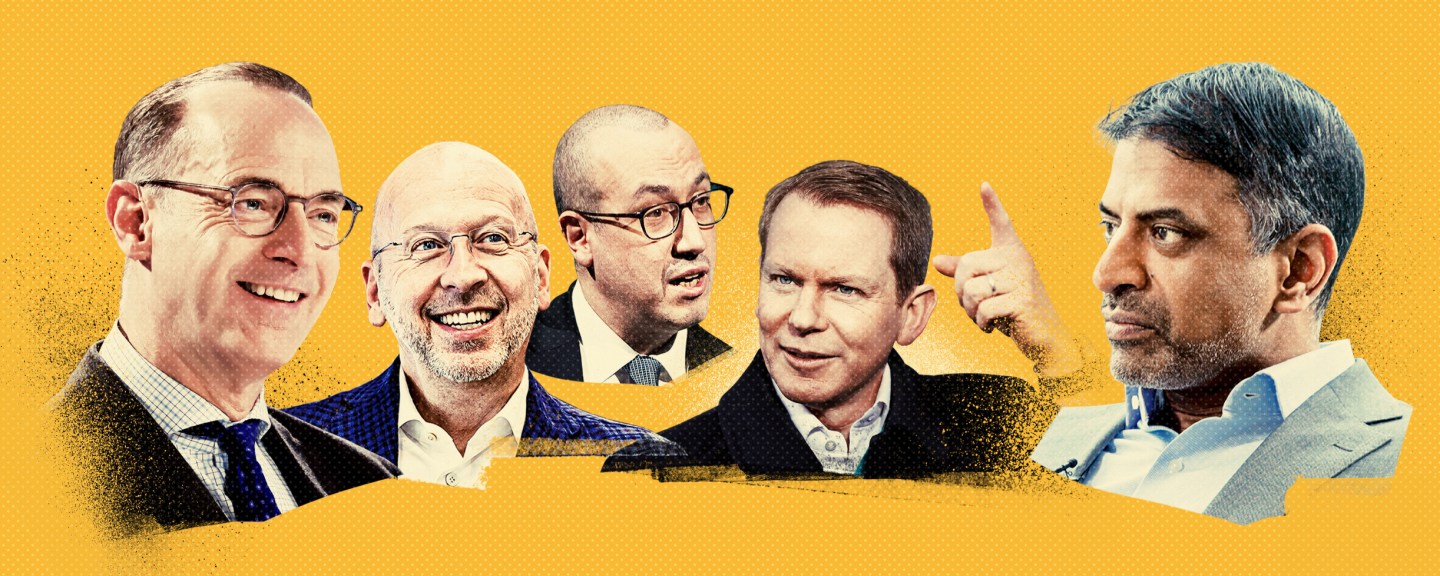
Photo Illustration by Josue Evilla—Fortune; from photos by KRISZTIAN BOCSI; ALBERTO ORTEGA/EUROPA PRESS; HOLLIE ADAMS/BLOOMBERG; SARAH BLESENER/BLOOMBERG; OLIVER DIETZE/PICTURE ALLIANCE; ALL VIA Getty Images
Even so, consultants turned CEOs say the firm gave them a powerful foundation. “The ability to define problems, disaggregate them, and reaggregate into solutions remains the most important toolkit,” says Bäte.
At Visa, McInerney says the habits he built at McKinsey still shape how he leads. “The brutally honest, quick, direct feedback loop and coaching were exceptional,” he says. “You learn to take it on the chin.” But like Bäte and Fraser, he credits the roles in between for his evolution. “I was certainly more prepared because of the path I took,” he says.
Once McKinsey, always McKinsey
In early May, current and former McKinsey consultants packed into a Manhattan restaurant to celebrate the retirement of the firm’s former North American managing partner and chairman, Gary Pinkus. The guest list read like a roll call of business heavyweights—CEOs, board members, senior executives. Roughly 150 people attended, flying in from around the world. Some were still at McKinsey. Others hadn’t worked there in decades. “It was like a family gathering,” says Pacthod.
McKinsey’s influence doesn’t end when alumni hand in their security badges. Its real power may lie not in the sheer number of leaders it produces, but in how tightly it binds them together long after they’ve left.
“I don’t care how long you stay, what matters is whether you have unrivaled development while you’re here.”
Bob Sternfels, Global Managing Partner, McKinsey
Today, McKinsey actively tracks more than 65,000 alumni, keeping detailed records of their trajectories and broadcasting their promotions, board appointments, and accolades through newsletters, private webcasts, and curated in-person events. The firm hosts about 180 alumni gatherings each year, and it estimates that roughly 90% of its former consultants engage with at least some of these programs regularly.
“It’s about creating resonance,” says Shelley Stewart, a senior partner who also helps oversee alumni engagement. “Making sure people feel proud of what they were a part of and still connected to it.”
But this is more than nostalgia: It’s strategy. Leaders of each McKinsey division are expected to “own” their alumni networks and geographies, nurturing ties that often pay off in future client work. At the heart of that network is a shared McKinsey experience that can outlast business cards and generations. “When someone becomes a CEO and the stakes are high, they come back to the people they trust,” says Stewart. “You might have two executives who were 15 years apart at McKinsey, but they get in a room and there’s that common bond—a shared vocabulary.”
It’s an affinity that feels markedly different from alumni networks in other elite industries. “It’s less transactional than what you see in banking,” says Fraser. “It’s more: ‘We know each other, we’ve learned together, we’ll help each other grow.’”
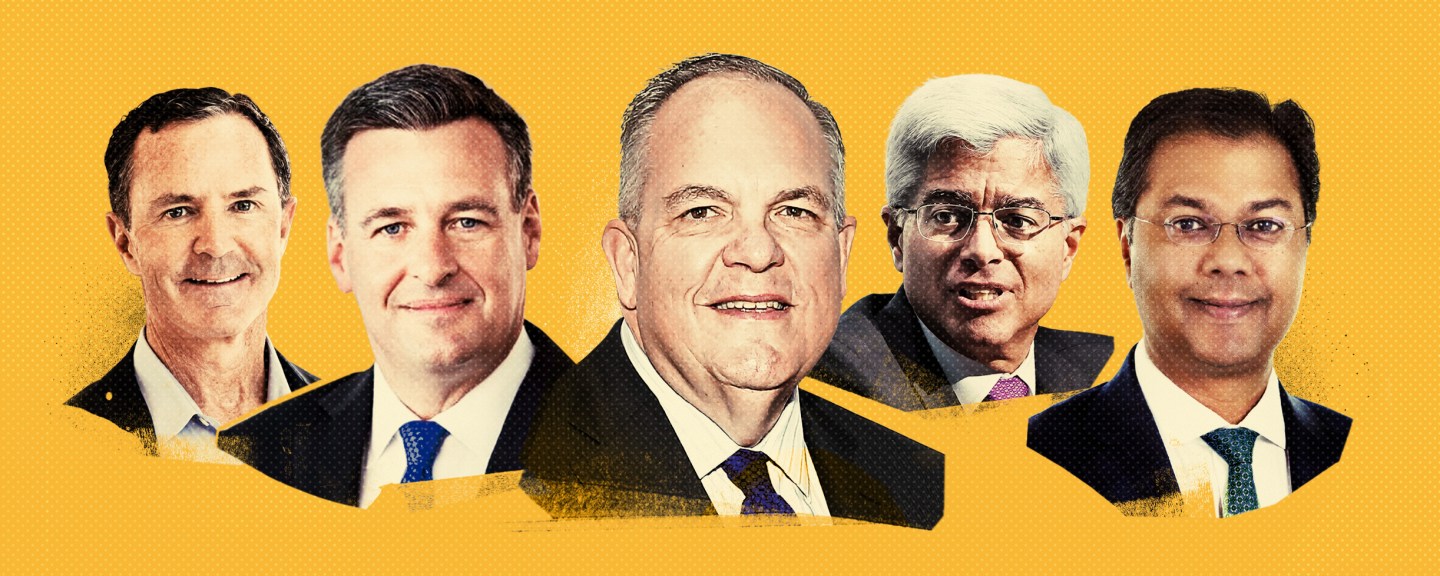
Photo Illustration by Josue Evilla—Fortune; photographs from photos by MONICA SCHIPPER—Getty Images; BENNETT RAGLIN—Getty Images; and Courtesy of the companies
This alumni flywheel also shapes how McKinsey handles departures. Rather than quietly managing people out, the firm often helps consultants land prominent roles elsewhere, betting that the goodwill will come full circle. “There isn’t a single major client situation I’m in where there isn’t at least one McKinsey alum involved,” says senior partner Pooneh Baghai.
That dynamic has turned the McKinsey ecosystem into a self-reinforcing loop of influence that embeds the firm’s worldview, language, and operating norms deep inside institutions that drive the international business arena. It also serves as a kind of informal governance mechanism. Stewart says he routinely shares firmwide updates with key alumni before publicizing them, soliciting feedback.
“You might have two executives who were 15 years apart at McKinsey, but they get in a room and there’s that common bond—a shared vocabulary.”
Shelley Stewart, Senior Partner, McKinsey
The loyalty isn’t blind. When McKinsey faced bruising controversies in recent years—from its work with opioid manufacturers to a bribery scandal in South Africa—it was often alumni who raised the loudest alarms. “They care deeply about the firm’s role in the world,” says Stewart, “and they will tell us when we’ve failed to live up to the standard we claim.”
The fallout from both ethical lapses was significant. The firm’s credibility took a public beating, and inside, it prompted a reckoning that came with real costs. McKinsey paid more than $1.2 billion in settlements and fines tied to its opioid work, and it agreed to pay almost $123 million to resolve investigations into the South African corruption probe. Internally, partners linked to the scandals departed; at least one senior leader was charged with obstruction of justice. Kevin Sneader, then the firm’s global managing partner, lost his bid for reelection in 2021 as the controversies swirled.
Sternfels says McKinsey has since invested nearly $1 billion to rebuild its risk and compliance infrastructure, hiring seasoned leaders from companies like Apple and Walmart, overhauling its client screening process, and redistributing decision-making authority. The result, he says, is a dual-track ethical framework—one to assess whether the firm should engage with a client, and another to hold consultants to a higher bar of conduct.
“I’ve been very clear that we’re going to use these moments to make ourselves better,” Sternfels
says. “When you position yourself as an advisor to the world’s most important institutions, you lose the right to just shrug when something goes wrong.”
Training for AI
As McKinsey works to restore its reputation, it has also been forced to reckon with another disruption reshaping the firm from within: generative AI.
Many of McKinsey’s most prominent alumni came up in an era when leadership instincts were forged the old-fashioned way, through whiteboard sessions, analytical modeling, and marathon client engagements. But with the proliferation of generative AI, much of that early-career work is disappearing at McKinsey, as well as at its clients.
That raises an urgent question: If early-career consultants no longer cut their teeth on the hardest analytical tasks, will they still build leadership muscle? “We have to modernize how we develop our people because times have changed,” says Sternfels.
That modernization cuts across client work and internal operations. Forty percent of McKinsey’s global portfolio now involves helping clients adopt and scale artificial intelligence and other related technologies. The firm has forged alliances with tech companies—including AWS, Microsoft, Google Cloud, Salesforce, and SAP—collaborating with them on strategy and solutions for clients.
In-house, the transformation is even more sweeping. McKinsey has about 40,000 human employees. But Sternfels says the total workforce is more like 56,000—including over 16,000 AI agents. “A year ago, we had 1,000 agents,” he says. “That tells you how fast this is moving.”
The goal, Sternfels explains, is to augment human consultants rather than replace them. “We want our people to be super-human, not superfluous.” That means reimagining the juniorlevel analyst role from the ground up. “No more PowerPoint production. No more data aggregation. No more basic synthesis,” Sternfels says. “What’s left is the creative, discontinuous problem-solving and human-to-human interaction.”
It’s a sweeping overhaul of how the firm trains and evaluates talent. Historically, McKinsey’s internal shorthand emphasized IQ and RQ—intelligence and relationship quotients—as key to consultant success. In the 2010s it added “capability quotient,” signaling the need for deep expertise. But in today’s model, AI fluency is nonnegotiable. “This is the core capability of the next chapter,” says McKinsey’s Hilton Segel.
The transformation is evident in how McKinsey hires. MBAs account for less than 20% of new hires today, compared with roughly 80% when Sternfels joined three decades ago.
That evolution is testing McKinsey’s long-touted apprenticeship model. As AI reduces the need for armies of junior analysts, Fraser concedes that the playbook will need reengineering. “A lot of that grunt work and analysis helped us build our judgment. We’ll need new ways to instill that skill set,” she says.
The firm is betting it can stay ahead of the curve by embedding AI fluency across every level. Data and automation literacy are now expected firmwide, from first-year analysts to senior partners. Engineers are embedded in client teams. And consultants are tasked with guiding the application of AI to drive growth for clients.
The tech imperative is also reshaping how McKinsey defines growth for its own employees. Today, that growth includes learning to partner with AI agents and doubling down on the skills algorithms can’t replicate. “McKinsey still does highstakes communication, problem-solving, and offering unique leadership development opportunities, better than most,” says Visa’s McInerney. Baghai agrees. “The fundamentals haven’t changed,” she says. “Unless you believe the world will be run entirely by AI and robots, those things will still matter.”
McKinsey says its newest reinvention is just the latest turn in its enduring mission: shaping not only strategy, but strategists. Pacthod points to memos from Marvin Bower, McKinsey’s influential managing partner from 1950 to 1967.
Bower codified many of the firm’s defining principles—including its “up or out” system—and made clear that McKinsey’s ambition was to both advise companies and cultivate the people who would one day lead them. Internal memos from bygone eras weren’t shy about it. Joining McKinsey meant stepping into what Pacthod calls “the frontier of leadership.”
For now, that ambition endures. McKinsey partners are still on speed dial when boards launch CEO searches, and the firm’s long-standing reputation as a leadership boot camp still opens doors. Pacthod says he’s fielded about a dozen C-suite job offers over the years. Likewise, Baghai and Hilton Segel have both been approached for CEO roles. Asked whether she might one day consider the corner office, Hilton Segel shrugs noncommittally and smiles: “Sure.”
Lessons from the CEO factory
The ranks of McKinsey alums who have become CEOs include 28 who presently run Fortune 500 or Global 500 companies. Here are the key lessons such leaders say they gleaned at the firm:
1. Problem-solving and judgment. Consultants must master the art of breaking down complex problems into solvable parts and sharpen their judgment through pattern recognition.
2. Exposure and confidence. From day one, new consultants are thrust into stretch roles and given rare access to senior decision-makers.
3. Communication and influence. Clear, structured thinking is nonnegotiable, and so is the ability to challenge assumptions and align diverse stakeholders around a shared course of action.
4. Owning their own trajectory. Consultants’ careers are expected to be self-authored, showing reinvention and range as they cycle across industries, functions, and roles.
This article appears in the October/November 2025 issue of Fortune with the headline “McKinsey alums dominate the world’s C-Suite. Will AI dry up the firm’s CEO pipeline?”
Source link

